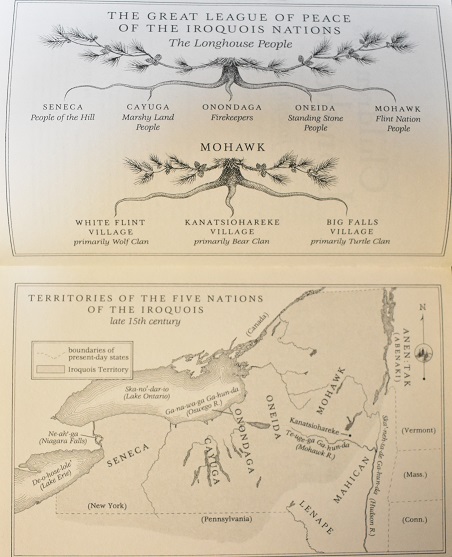Children of the Longhouse by Joseph Bruchac.
Puffin, Penguin Group, New York, 1996.
MG historical fiction, 154 pages.
Lexile: 950L .
AR Level: 5.5 (worth 5.0 points) .
NOTE: This is a work of fiction although I’m not reviewing it on Fiction Friday.
Follow twins Ohkwa’ri and his sister Otsi:stia as they navigate peers who are trying to break the peace treaty, coming of age, and a sacred game of lacrosse.

It’s worth noting that this is NOT an #ownvoices book. Bruchac is Abenaki, a neighboring group to the twins – but the main characters are all Mohawk, members of the Iroquois League of Peace. This book was originally included in a 2006 recommendation list on AICL, but I noticed that as of this writing, Bruchac was conspicuously absent from the August 2020 list of historical fiction recommendations on AICL. This makes sense given that AICL has recently had several neutral or negative reviews of his work, especially when working outside of his own nation. However, given the glowing reviews some of his books have previously gotten, it’s hard to know if he’s still a generally suggested author or not.
The book is divided into two sections and the second is a lot more engaging than the first. Which surprised me since the second part is only about the game, while the first is much more wide ranging.
Part One is called The Way of Peace and has seven chapters that mostly alternate between Ohkwa’ri and Otsi:stia. A few major things happen here – Ohkwa’ri overhears some of the other boys planning a raid on another group, even though they are at peace and the elders have not approved that plan. Otsi:stia is preparing for the strawberry festival with the other women, and Ohkwa’ri is starting the process of transitioning from a boy to a man, with help from his uncles.

The second part of the novel focuses on a game of Tekwaarathon, which is today commonly known as a team sport called lacrosse and frequently played by non-Native athletes, divested of all cultural meaning. I am not generally a fan of sports stories, but the second half of this novel was far more engaging and the pace felt faster, although it took place over only a few days. I’d previously read Bruchac’s novel The Warriors, which is a near-modern day sports story about a boy playing lacrosse at boarding school. This book was better.
Bruchac often takes a heavy-handed approach to culture and history in this text. While some knowledge comes smoothly out of developments in the plot or as part of described details, a great deal is brought up through the children thinking about it. That said, this was certainly far more entertaining than a textbook, and I can see why teachers and homeschooling families would prefer to use this than a dry historical tome about the same time period.
The naming was a bit confusing, as some characters were called by their name in the appropriate language, while others used the English translation of their name. I know sometimes characters have modified names of supposedly easier pronunciation in the US book market, but since Ohkwa’ri and Otsi:stia, the names most often said in the book, are not familiar, I didn’t understand why other names were changed. The pronunciation guide is nice, but if I were using this in a class I would need to buy the audiobook to ensure an accurate read aloud. The authors note doesn’t speak to the name choices; I wish it did. Naming is important.

Be careful when selecting this title. Overall we enjoyed this book, and I do plan to eventually read it with my children. However, I wouldn’t add it to a teaching plan or library that didn’t include multiple modern-day representations of Native Americans. History studies in the USA tend to minimize modern indigenous presence, so if your budget or selection ability is limited, I think more recently set selections should be a higher priority for updating your collection.
That said, I cannot think of any other pre-contact indigenous-authored historical fiction for upper elementary/middle grade readers. (Please let me know if you are aware of titles I’m not.) Other picture books exist, and there are other fiction books set after invasion, but this definitely fills a gap. Therefore I will tentatively recommend it, with the caveats mentioned above.